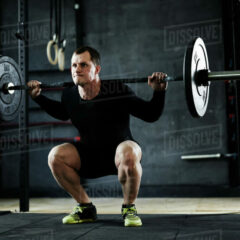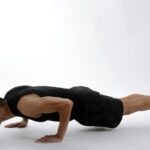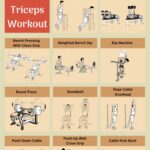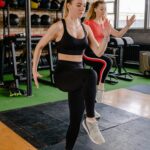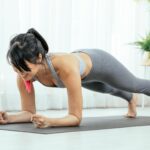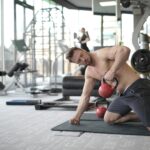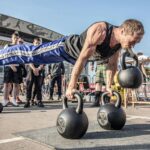https://weightliftingforpower.com/beginner-dumbbell-weight-training-program/
Dumbbell Weight Training Program
A dumbbell weight training program can be both exciting and a little intimidating, but understanding the benefits can help ease those nerves. Weight training with dumbbells not only improves muscle strength but also enhances your cardiovascular fitness, boosts mental health, and even aids in weight loss.
Choosing the right dumbbell weight is crucial. Using weights that are too heavy can strain your muscles, while weights that are too light fail to provide the challenge you need. It’s essential to find the right balance to maximize your training results. Choose a weight that lets you comfortably perform 12 to 15 repetitions; aim for the last few reps to be challenging yet attainable. This approach will effectively push your limits and enhance your strength over time.
Remember, safety is paramount in your training journey. Ensure your workout area is free of obstacles and maintain a firm grip on the dumbbells to prevent accidents. Wearing appropriate footwear with good support is also crucial. Listen to your body and avoid pushing through any sharp pains to keep injuries at bay. Your safety is our top priority.
Proper form is more important than how much you can lift. Focusing on technique ensures you target the right muscles and prevent strains. It’s worth practicing movements with no weights or very light weights first to master the basics. Engaging with instructional videos or partnering with a trainer is an effective way to master the skills and techniques you need.
Finally, creating a motivating environment and mindset can make all the difference. Establishing a regular workout routine and adhering to it is crucial—consistency will lead to lasting results. Having a dedicated space, whether it’s a corner of your living room or a spot in the garage, can help you mentally switch to workout mode.
Crafting Your Personal Dumbbell Training Program
Laying out a solid dumbbell training program starts with setting clear, achievable goals. To effectively build muscle, shed fat, or sculpt your body, it’s vital to set clear, achievable goals. By defining your objectives, you can tailor your workouts effectively and achieve the results you desire. To keep your motivation strong, break your big goals down into smaller, manageable milestones that you can achieve. This approach makes progress feel attainable and keeps you focused on success. This approach not only makes progress feel more achievable but also keeps your enthusiasm high along the journey.
Structuring your workouts effectively involves deciding on the number of sets, reps, and rest periods. Beginners often start with three sets of 10-12 reps, with rest periods of 30-60 seconds. This balance offers a great way to build endurance while also toning muscles.
An effective workout routine must engage all major muscle groups for optimal results. Splitting your workouts between pushing exercises like press-ups on day one and pulling movements like rows on another day ensures balanced development. Don’t shy away from leg work—squats and lunges are crucial for building a strong foundation.
Progressive overload is a key principle in your training. It’s about gradually increasing the weight, reps, or sets as you get stronger. This principle is crucial for continuous improvement and keeping your muscles challenged. Every couple of weeks, assess your progress and see if it’s time to step it up a notch. This commitment to progression will keep you motivated and on track.
Tracking progress keeps you on top of your game. Documenting workouts in a journal or fitness app provides insights into what’s working and what’s not, enabling adjustments to your program. Remember, your body’s needs may change, so stay flexible and open to tweaks for maximum results.
Beyond the Basics: Enhancing Your Dumbbell Workouts

Once you’re comfortable with the basics, step up your routine by incorporating compound movements. These exercises activate multiple muscle groups, offering a powerful way to maximize your fitness routine and achieve overall body benefits with each efficient move. Examples include deadlifts, which work your back, legs, and core, and thrusters, which target your shoulders, legs, and core.
For targeted muscle development, incorporating isolation exercises such as bicep curls and triceps extensions is highly effective. These movements not only enhance muscle definition but also strengthen specific areas, helping you achieve your fitness goals more efficiently. These moves target and shape particular muscle groups, making them ideal for meeting your personal fitness goals.

Remember, variety is the spice of life, even in your workouts. Switching up your exercises not only combats workout boredom but also stimulates different muscle fibers for well-rounded development. Consider integrating circuit workouts or testing new dumbbell exercises you haven’t tried before. This diverse range of workouts will keep your training fresh and exciting, ensuring you stay motivated and never lose interest in your fitness journey.
Supplementing your dumbbell sessions with other forms of training adds variety to your regimen. Activities like cardio, yoga, or bodyweight exercises add different dimensions to your fitness routine and contribute to overall health.
Proper nutrition, rest, and recovery are as important as the workouts themselves. Fuelling your body with the correct nutrients and ensuring adequate sleep significantly enhances performance and muscle recovery. Incorporate rest days into your regimen. Please take advantage of these rest days, as they are crucial for allowing your muscles to recover and build strength without the strain of intense workouts. To achieve lasting success in your training, it is vital to safeguard against burnout. Prioritizing your well-being ensures you stay on track and continue making meaningful progress.
As you progress, consider expanding your training with advanced techniques or heavier weights. When your current program becomes easy, it’s a sign to advance to maintain your growth trajectory.
